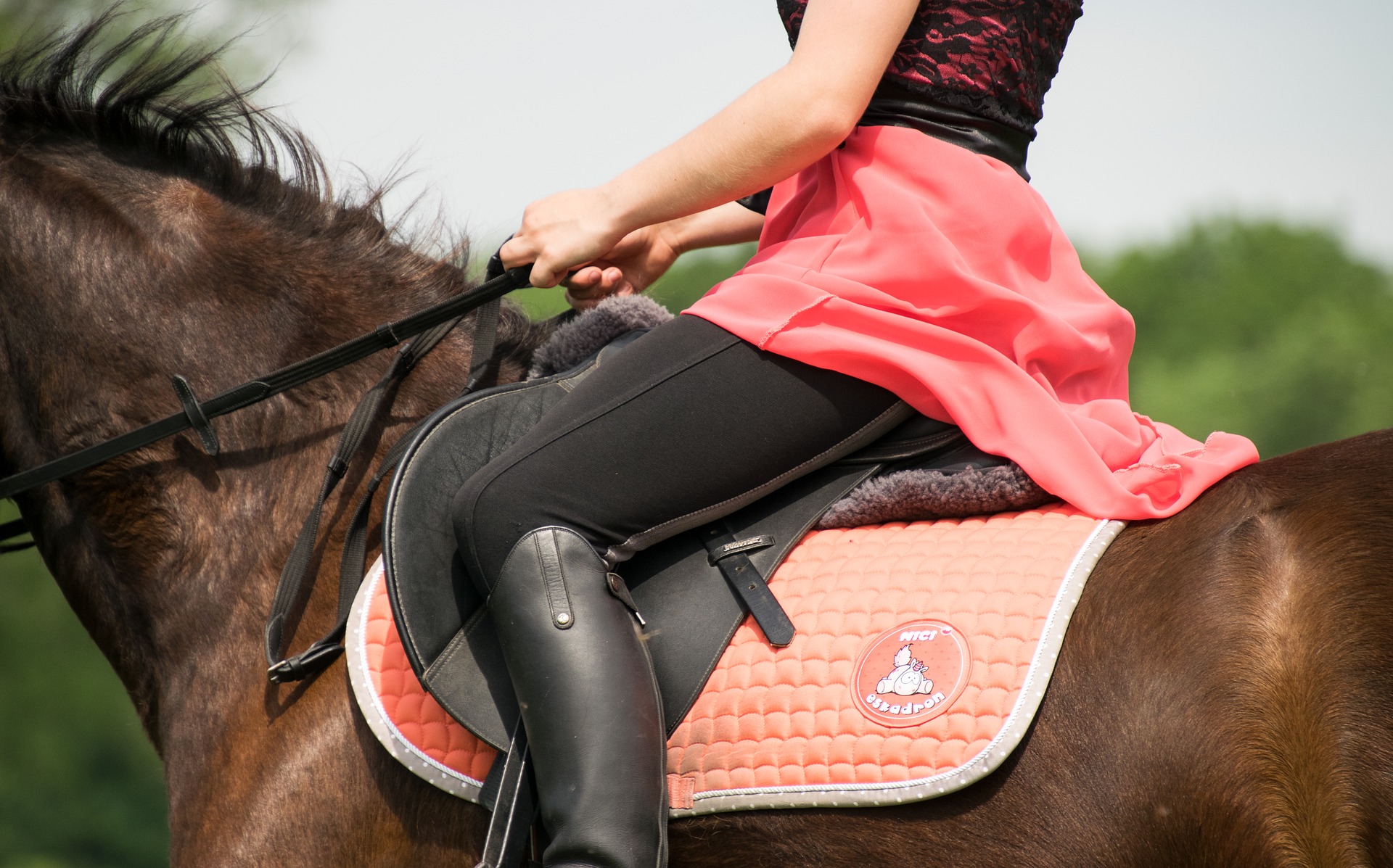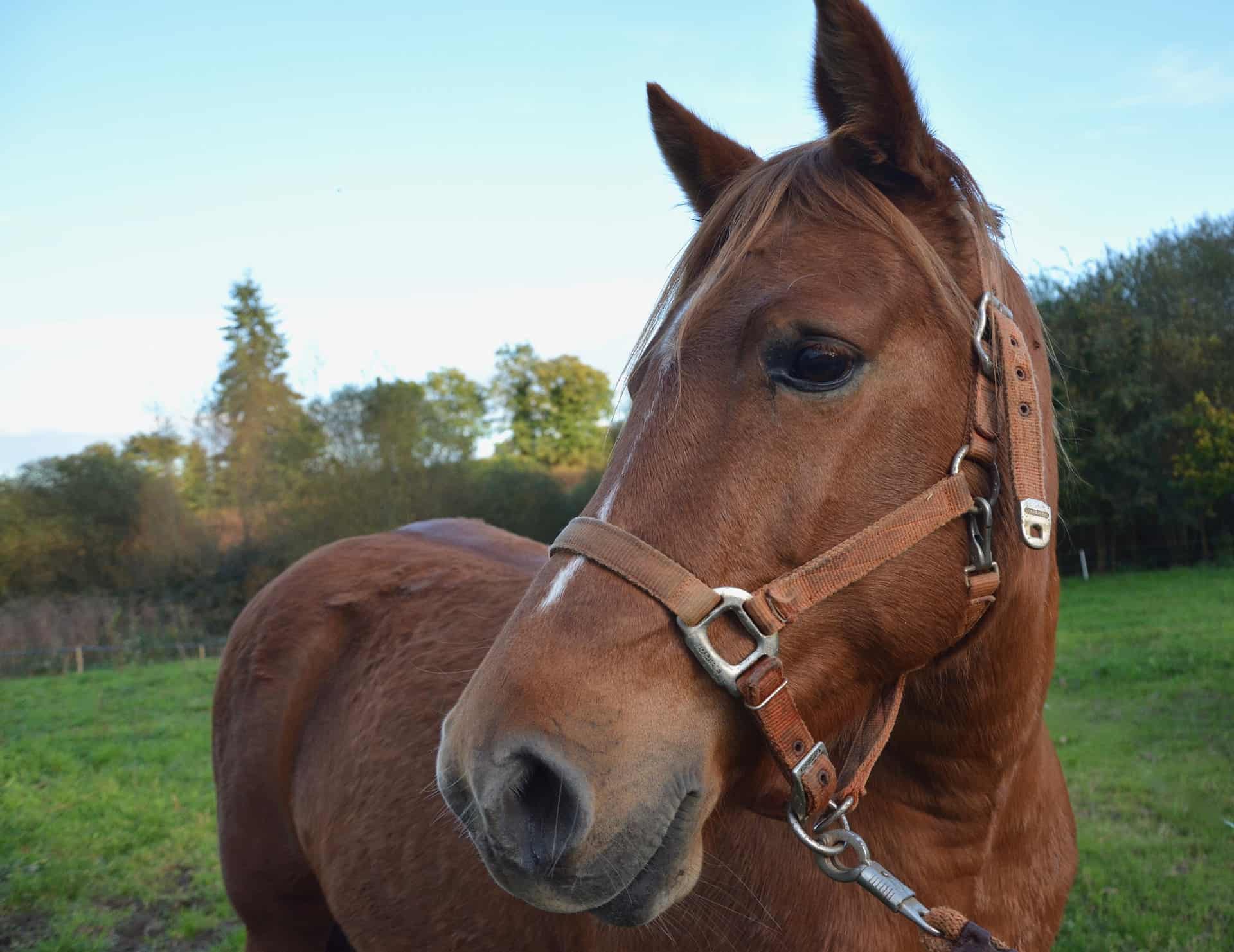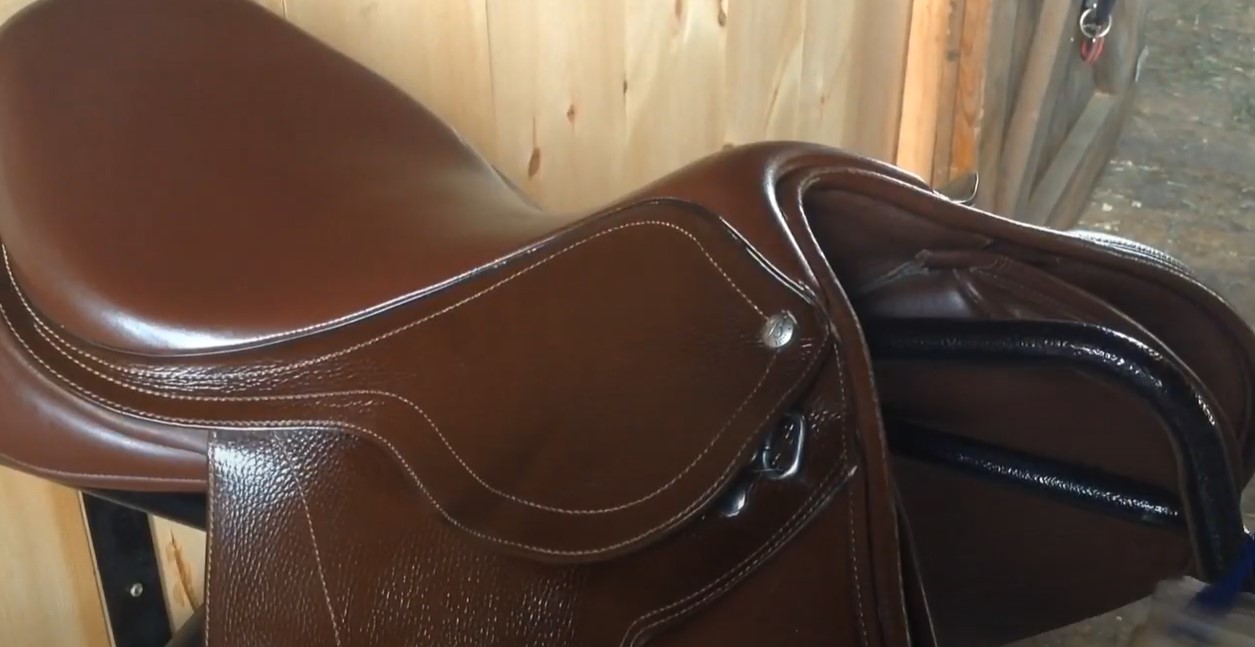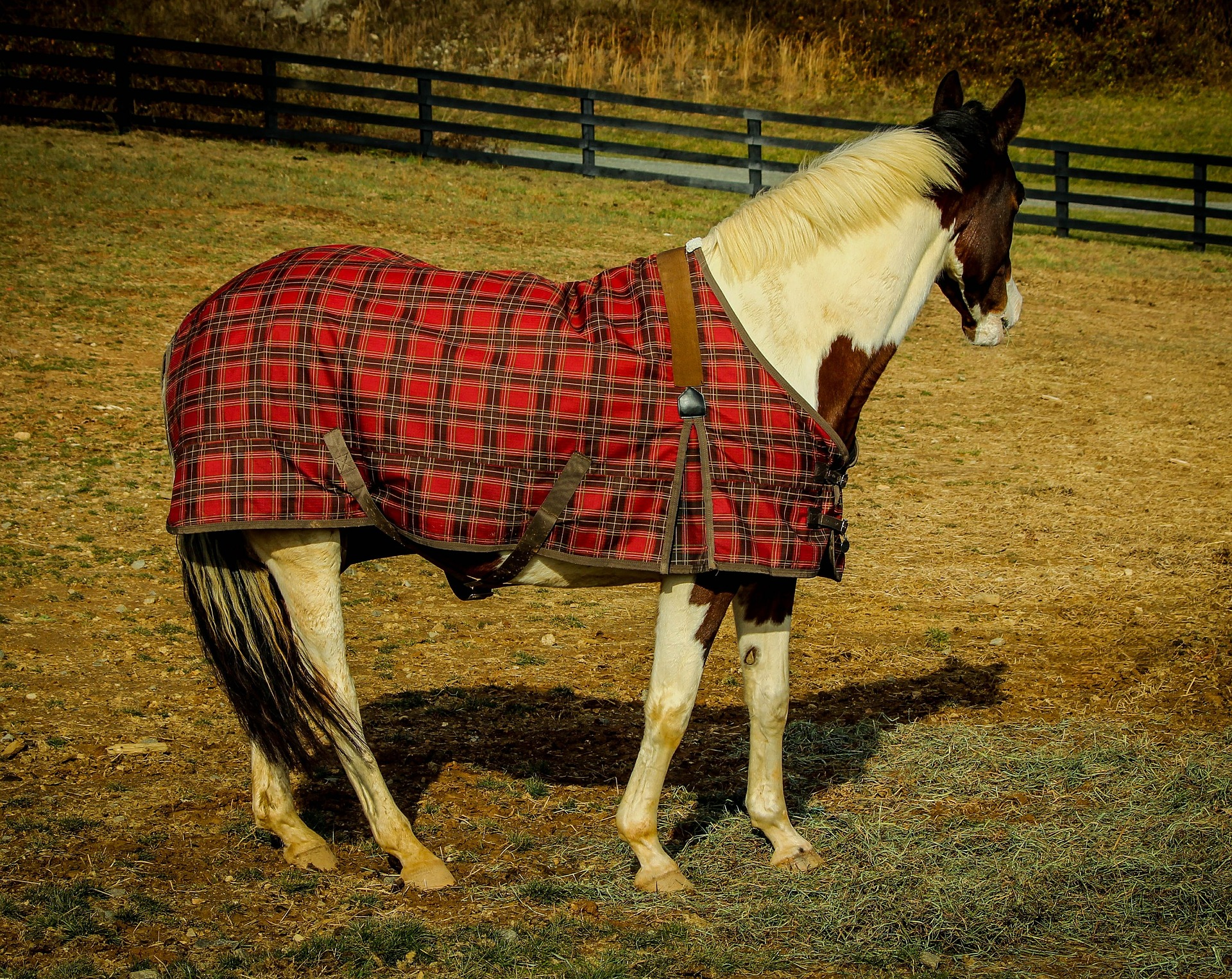We all want our horses to be relaxed when they're being ridden. An uncomfortable horse is one that's likely to lose concentration or have erratic behavior. The saddle sits on your horse's spine so this area must be protected from pressure during a ride. Using the best saddle pads for horses will provide them with comfort and protection. This, in turn, will enhance performance and optimize your safety as a rider. Below, you'll find all the things you need to consider before buying an equine saddle pad.
Benefits of Using A Saddle Pad
The function of a saddle pad is primarily for shock absorption and to distribute the weight of rider and tack evenly over the horse's back. Because the weight is more distributed, it creates fewer pressure points on the horse's back during riding. This makes working under the saddle more comfortable for the horse. As well as protecting the back and balancing pressure, a saddle blanket will also protect the horse's skin from friction and prevent the saddle from absorbing sweat. A good pad will also be breathable to help dissipate the heat that’s created under the saddle during riding.
Evolution of Saddle Pads
Saddle pads have changed a lot over the years, in their design as well as their purpose. Traditional pads would often be made from thin cloth. Their main purpose was to protect the saddle and they weren't very shock absorbing. These days, it's the opposite, new pads are designed to protect the horse's back from the pressure of the saddle.
As our understanding of horse anatomy has increased, saddle pads have become an essential piece of tack that's vital for the welfare of the horse's back during riding. They’re designed with the horse in mind and a modern pad can help with poor conformation of the back, as well as taking the impact out of pressure points during competitions or when carrying heavy loads. Saddle blankets are continually evolving with the latest technology to provide the maximum comfort and protection for your horse's back.
Different Types of Saddle Pad
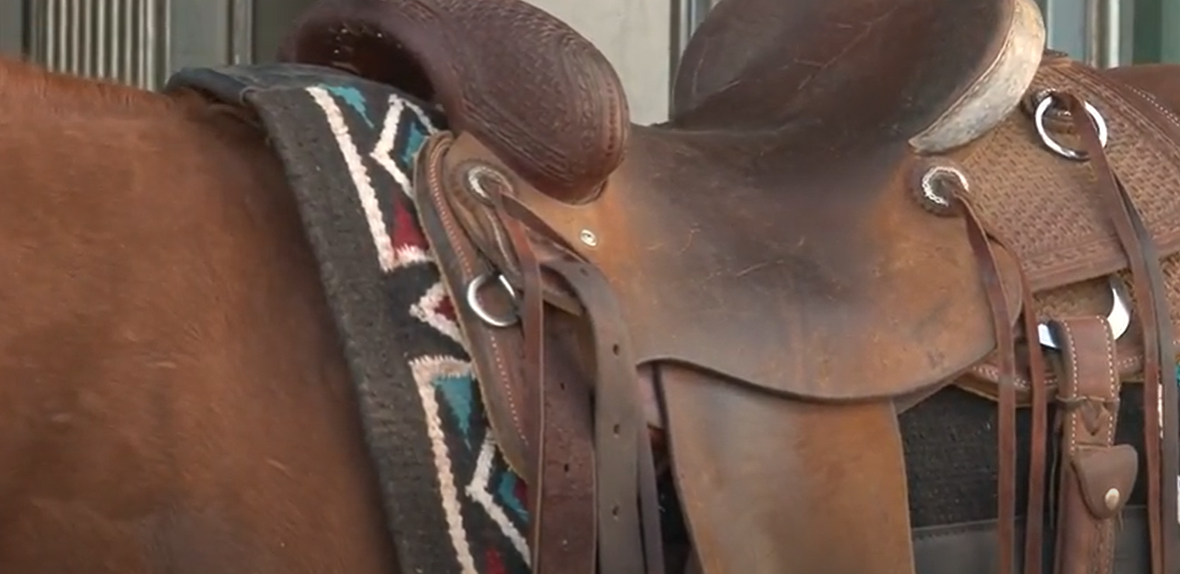
The range of horse pads on the market is pretty immense and it’s hard to know what you should be shopping for. Here is a list of the most common types of pad that you'll find on the market.
Natural Animal Fibers
Wool fleece and sheepskin pads are the most expensive types of pads but are popular because of their comfortable fit and soft texture. The natural fibers are highly breathable and sweat absorbing and they contour easily to the horse's back. Though they are more expensive, they generally wear out quicker than synthetic pads. This is because the natural fibers compress more quickly and sweat from the back breaks down the natural fibres. Wool and sheepskin pads also require specialist cleaning.
Synthetic Fleece
Synthetic fleece pads are one of the most common types that you'll find on the market. They're economical to buy and very easy to maintain, most of them can go in the washing machine. As well as being durable, synthetic fleece is sweat absorbing and breathable too. Most horses will be very comfortable under a synthetic fleece saddle pad.
Felt
Felt pads are made up of many compressed layers of thin materials either natural wool felt or a synthetic alternative. These layers mean that they're very good at dissipating the heat away from the body, helping prevent heat stress in your horse. Because of their density, wool felt pads are highly shock absorbing and defend against excessive pressure. They offer a lot of support to your horse. The downside to wool felt pads is that they are difficult to clean and maintain. This makes them less durable than other pads.
Neoprene
Neoprene pads are the easiest ones to maintain, they can be cleaned off easily with a hose or a damp cloth. The rubber-like texture of neoprene pads gives them an excellent grip which is great for a slipping saddle. Neoprene isn’t very breathable unless the pad is made with a special “waffle” design. Neoprene doesn’t conform to your horses shape like other types of horse pad.
Gel Pads
These pads are one of the more expensive types on the market and they usually come in half pad size for specific contouring. They're commonly known as therapeutic pads because they benefit horses with conformation faults in the back or withers. A gel pad will provide high levels of cushioning and support though they aren’t very breathable. Because a gel pad is quite heavy, look for ones with a clearance groove down the middle. This will help to keep the heavy pressure of the pad away from your horse’s spine.
Foam Pads
A foam pad is made from a material very similar to memory foam and they're becoming increasingly popular amongst riders. As well as being lightweight, they're very comfortable and feel just like natural materials. They contour to your horse's back very easily and can be used therapeutically under the saddle. A foam pad will be made of open cell foam or closed cell foam. Open cell foam is more breathable than closed cell foam, however, closed cell foam is more resistant to pressure.
Half Pad
A half pad is smaller in design and should be used in conjunction with a full pad. A half pad can give extra support directly underneath the tree of the saddle. This can be good for horses with poor muscle condition or conformation faults, or for saddles with too much clearance.
Sizing and Fit Guide
No matter how well fitted or expensive your pad is, it won't give support and comfort if the saddle fit is poor. A pad should never be used to correct a saddle that doesn't fit well. When it comes to selecting the size and fit of your pad, the general rule is to buy one that's two to three inches longer than your saddle size.
The pad should clear your saddle by at least an inch all the way around. You don't want any seams to be under pressure from the saddle. When you place the pad on the horse, put it over the withers and then slide it lower back into place. This makes sure that everything is smoothed out underneath preventing friction. You should be able to pull the pad up into the gullet, it shouldn't be pressed tight against the withers.
One good way to check that the pad and saddle fit well, is by looking at the sweat marks after riding. If the sweat is unevenly distributed around the pad then it could mean you need to replace the blanket or that your saddle fit needs to be adjusted. A blanket that doesn't fit well can potentially injure your horse.
How To Choose The Right Saddle Pad
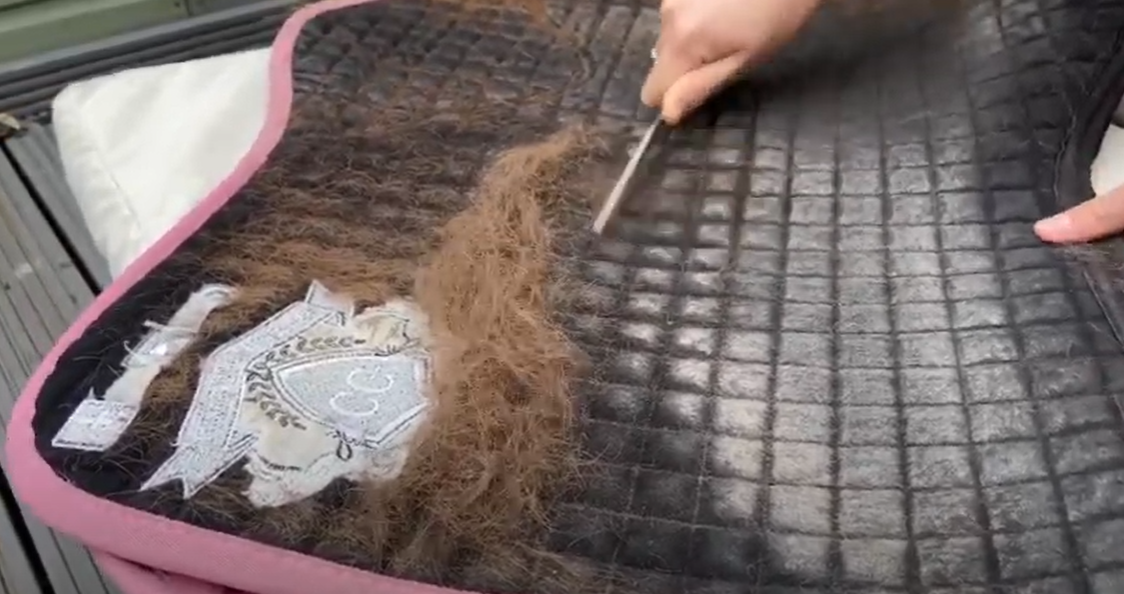
Saddle pads have to be a good saddle fit, a good fit for the horse, and to the design tastes of the rider. Below are the main things to consider when you're looking for the perfect pad.
Thickness
There are three main things to consider when choosing the thickness of your pad. These are the amount of time spent in the saddle, the weight of the rider and the conformation of the horse. Thickness starts at half an inch and goes up to 1 1/8 inch. As a general rule, a horse with poor conformation will need a thicker pad and for heavier saddles, pads with a good level of thickness are also recommended.
If your horse has perfect back conformation but works for more than four hours at a time over rugged terrain then you should go for the thickest option to alleviate pressure. If you have a pleasure horse working on flat ground and are rarely in the saddle for more than an hour at a time then choose a thinner pad. Thicker isn't always better, if your saddle fits well, you don't want to set the balance off with a thick pad.
Your Riding Style
A western saddle pad is usually rectangular to fit the shape of the saddle. For the best western saddle pad choose one that's heavily padded, this is to support the extra weight that comes with a western saddle. English pads for English saddles are a little less bulky and come in a range of shapes and sizes to suit each riding discipline.
Pads for dressage saddles are usually square or rectangular and have a straight long cut at the front to match the long flap of a dressage saddle. Jumping and eventing saddles are more shaped at the front to accommodate a saddle with leg rolls and they should have extra cushioning for the impact from jumping. For the best protection, choose a pad that suits your riding activity.
Your Horses Needs
Another thing you need to consider is your horse's individual needs, these are particularly important when you're choosing a pad, especially if your horse has unique conformation. For straight or flat backed horses use a flat pad and for horses with dipped backs use a more contoured pad. If your horse's muscles are underdeveloped then use a pad with extra cushioning or use a round-backed pad for horses with short backs. Some pads are cut out at the front to provide relief fore a horse with high withers. With so many different designs on the market, you'll be sure to find the right one to suit your horse's exact needs and requirements.
Material
The material that you choose will depend on your needs and your budget. Natural fibers such as wool and felt material cost more due to their comfort and high wicking capabilities. If you're on a smaller budget then memory foam is a good material to choose, it being a slightly less expensive alternative. The most economical saddle pads are synthetic fleece pads. Even though they are cheaper, the material is durable and comfortable for your horse.
The outer layer of the saddle blanket will usually be covered in cotton, polyester or a tough, decorative blanket material on western saddles. Polyester material is the most durable fabric outer and is a good choice for a pad that will undergo lots of wear and tear. Pads with a cotton outer are generally more breathable and lightweight. Choose a durable pad for everyday use or a more decorative, lighter pad for showing.
Special Features
Lots of saddle pads these days are adjustable which is great for adapting them to your horses changing needs. Some saddle pads have special pockets where shims can be attached. Shims are very thin pads that can be added or removed when required. Shimming a saddle can help bring balance to the seat. Some pads may also have gel shims which can be used in the same way to provide extra support.
If your saddle keeps slipping no matter what you do then look for a pad with special none slip features such as neoprene patches. If you're riding in a very hot climate or under the conditions of a show then choose an extra breathable pad.
Colors
The least important thing, but important all the same is the color of your pad. We all have our preferences when it comes to color and style. Matching colored pads look good on a team riders or to represent a specific barn. These days you can find saddle pads in almost every type of pattern or color.
What Saddle Pads Are the Coolest for Horses?
To choose the coolest saddle blanket for your horse then it's good to choose a material with good wicking capability. Pads with good wicking properties are more cooling because they will draw the moisture up and away from your horse and allow air to flow beneath the blanket. This moisture will then evaporate into the atmosphere, keeping your horse cooler. Natural fibers such as wool, sheepskin, cotton and felt material are the best at wicking and are therefore the coolest ones for a horse.
How To Make Saddle Pads
If you're experienced with a sewing machine then saddle pads are surprisingly easy to make at home. They have a very simple design and you can even take the measurements from an existing one. Making your saddle pad means that it will be custom made to your horse and saddle. You can use this article to guide you in choosing the right materials for your homemade pad.
You just need a sewing machine, thick cotton, a few simple materials of your choice to make one at home. You can also get very creative with colors and patterns. Children especially will love themed saddle pads that can be crafted at home. If you do make your saddle pad at home then make sure it's well constructed, smooth, and that it provides adequate comfort and protection for your horse.
How Long Will A Saddle Pad Last
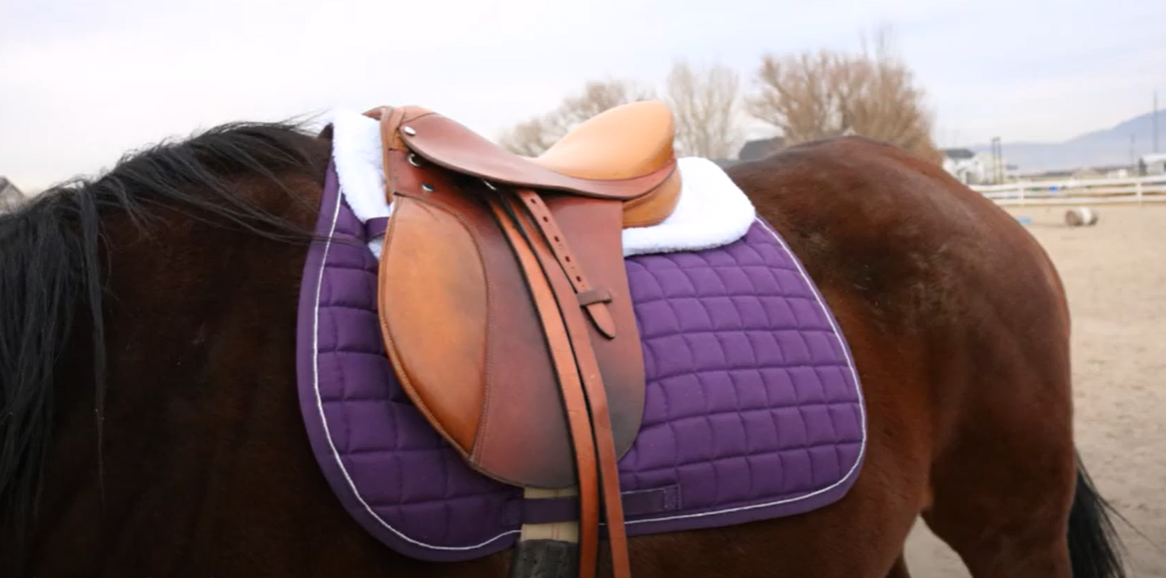
On average, if maintained correctly then a good saddle pad can last for several years. You'll know when it’s time to change it when it becomes too compressed and loses its fill. This means that it will no longer provide adequate comfort and support. Neoprene saddle pads need to be replaced when they become hard, dry and cracked.
Saddle Pad Cleaning and Care Tips
Saddle blankets are made from a huge range of different materials so it's important to follow the manufacturer's cleaning instructions. Different pads have different cleaning requirements. A lot of synthetic ones can be put in the washing machine while ones made from natural fibers will need specialist cleaning.
A dirty saddle pad can cause friction and rubbing so they must be cleaned and checked regularly. An easy way to remove hairs and debris is with a dandy brush. Airing the saddle pad is also good for hygiene and for prolonging its life span. The best way to do this is by hanging the saddle pad upside down after riding and whenever it's not in use.
Hanging the saddle pad out in the sun to dry after cleaning will help to kill off any bacteria from the horse's sweat. When it's dry then you should fluff your pad out this prevents compression and makes the pad last longer.
Reviews of the Best Ever Saddle Pads
Below we've reviewed six of our favorite saddle blankets available on the market right now.
1. Dover Saddlery Quilted All Purpose Saddle Pad
Dover Saddlery is based in the USA and is a trusted brand that's been producing equine equipment for over forty years. Their all purpose saddle pad is one of the best English saddle pads. It's durable and suitable to be used in a range of riding disciplines. It's machine washable making it an easy pad to maintain and it comes in six elegant colors all finished with a quilted diamond pattern. This pad is made with durable polyester outer and cushioned with polyester foam. This is the best saddle pad for dressage riding.
2. TuffRider Basic All Purpose Saddle Pad
This all purpose saddle pad from TuffRider is one of the most economical pads on the market. It has an adaptable shape that can be used in various types of English riding. It's lightweight with a cotton flannel underside that will help to keep your horse cool. It's finished with a tough micro-polyester quilted outer and comes available in a range of vibrant colours. This is the best saddle pad for English riding.
3. Diamond Wool Contour Felt Ranch Pad
This high quality, thick felt pad from Diamond wool is highly rated amongst ranchers, making it the best saddle pad for ranch work. It provides the utmost in comfort and support under tough working conditions. Its contoured shape gives it a secure fit and it comes with a special “wither relief notch” to alleviate pressure on horses with high withers. The thickness and wicking properties of this saddle blanket make it one of the best saddle pads for roping.
4. Tough1 Square Saddle Pad With Fleece Bottom
This fleece bottomed pad from tough one is the best western saddle pad. It's specially designed to fit a western saddle and comes in a range of traditional western colors and styles. It has a heavy felt center providing lots of support making it very comfortable and one of the best saddle pads for barrel racing.
The pad comes with leather wear guards to protect from the contact at the withers and the girth. This is a nicely crafted pad that will be sure to last a long time under a Western saddle.
5. ECP All Purpose Memory Foam Half Saddle Pad
This is the best saddle pad to choose if you have a horse with conformation problems. It's highly adjustable so can be fitted precisely to the saddle and your horse's back. It comes with four special pockets plus memory foam shims for precision fitting. These shims can also increase the shock absorption capabilities, which can help prevent injuries to your horse during large amounts of time under the saddle, making it the best saddle pad for trail riding. This pad is made from cotton making this very soft, lightweight and breathable for your horse.
6. ECP Contoured All Purpose Memory Foam Saddle Pad
This memory foam pad from ECP is designed to change with your horse's needs. Extra memory foam shims can be easily added or to suit your horse's needs and it has a precise contoured fit. It has a high level of shock absorption making it one of the best saddle pads for jumping and eventing. This is a very versatile pad that comes in a huge range of attractive colours.
Top Choice
When it comes to choosing the best pad then you can't go wrong with the Contoured Memory Foam Pad from ECP. This is a versatile pad that will suit most riding needs and can be adapted to suit your horses' changing shape. It offers extra support, the maximum in shock absorption, and is sure to provide the ultimate in comfort for your horse's back.
Conclusion
These days you will rarely see anyone riding without a pad or blanket. It's a standard piece of riding gear that provides comfort to your horse and enhances your safety as a rider. Remember, a pad only works well if it's used with a good fitting saddle. By taking into account all the information from this article you'll be sure to find the best saddle pad for your needs.
